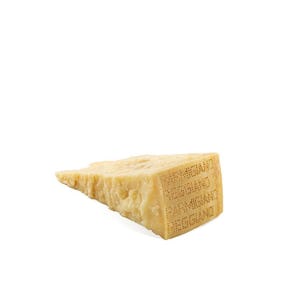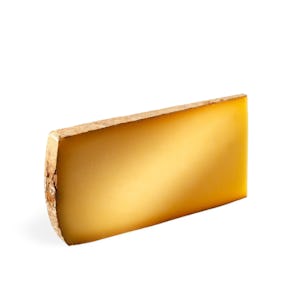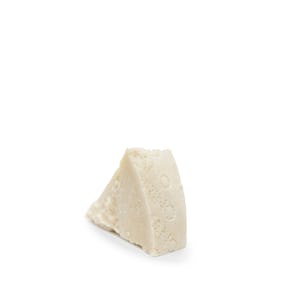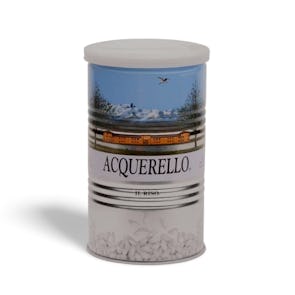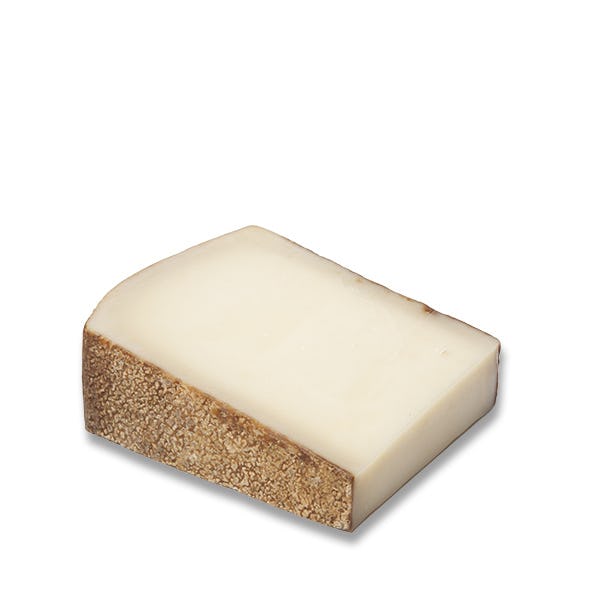
Gruyère from Switzerland
Gooey Gruyère
TASTING NOTES FROM THE CURATOR
Named after the town of Gruyères in the Fribourg canton (similar to a district) of Switzerland, the Gruyère cheese is an Alpine cheese made with unpasteurized milk from cows fed only on natural forage. It’s pronounced “groo-YAIR,” and has been produced with the same recipe since the year 1115.
Gruyère is a hard cheese with an edible rind, and a pale-yellow interior. It has a smooth, creamy texture, and melts easily. It has a generally sweet and slightly salty taste, but its depth depends on its age. While young, it has a creamy, nutty flavor. As it gets older, its flavor becomes earthy, complex, and more assertive.
PREPARATION AND PAIRINGS
Because it’s an easy melting cheese, it’s perfect for cheeseburgers, and grilled cheese sandwiches. Use it for breakfast and make Gruyère waffles. It’s also wonderful grated over salads and pastas, and classically, it’s used in fondues.
You can also make a delicious Croque Monsieur:
- Make a bechamel by melting butter in a saucepan over medium heat. Put in flour, and cook, whisking for around 3 minutes. Slowly add in milk, continually stirring until smooth. Keep cooking and stirring until thick. Season with salt and pepper, and remove from heat. Whisk in Dijon mustard and nutmeg. Set aside.
- Spread a layer of the bechamel on one side of two slices of crusty bread. Place the bread on a baking sheet lined with parchment paper, bechamel side up.
- Place a piece of ham on the slice, and a handful of grated Gruyère cheese. Sprinkle a bit of grated Parmigiano Reggiano.
- Put the other slice of bread on it, bechamel side up, then top with more Gruyère and Parmigiano Reggiano.
- Bake in a preheated oven at 425F for about 5 minutes, until cheese is melted and slightly brown.
- Serve immediately.
GRUYÈRE VS GOUDA
Both Gruyère and Gouda are named for their place of origin— Gruyère in Switzerland, and Gouda in Netherlands. They look similar, and both are made with cow’s milk. They also taste similar—nutty, creamy and sweet. Although Gruyère is less overpowering when used in dishes.
Both are also great melting cheeses, but as Gouda ages, it gets better for grating instead. And Gruyère is gooier than Gouda. In fact, Gruyère is the gooiest cheese when melted, owing to the way it’s made.
Storage Instructions
Cheeses (except brined ones in jars) should be stored in the crisper or the butter drawer of a refrigerator, not on the shelves themselves. This is to help regulate their temperature and humidity levels—and prevents the formation of mold. Once opened, they should not be kept in their original packaging. Hard cheeses should ideally be wrapped in cheese paper after opening. An alternative is to wrap them tightly in parchment paper to allow them to breathe. Moisture is not as big a problem for hard cheeses as it is for other kinds, but don’t forget to write up a label with the date you first opened the package and to replace the parchment paper every time you open the cheese. Kindly pay attention to the best before date label when you receive your cheese. Consume prior to date indicated.

